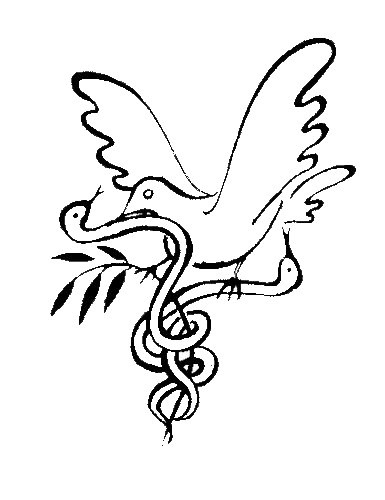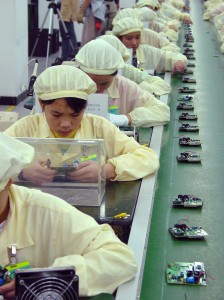March 5, 2017
The case of the missing Barnes paintings
 Dr. Albert Barnes was a chemist who made a fortune at the turn of the 20th century developing a treatment for infant blindness. He became interested in art and befriended the painter William Glackens. The two began collecting modern paintings in Paris in 1911, and Barnes eventually developed a private collection of paintings that today is valued at $50-60 Billion. Amazingly, he collected the works of the masters before they were masters, almost the equivalent of buying the Mona Lisa off Da Vinci in a dark Venice alley for twenty bucks. While he never got his hands on Mona, he amassed a world class collection of Renoirs, Picassos, Matisses, Modiglianis, Van Googhs, and more.
Dr. Albert Barnes was a chemist who made a fortune at the turn of the 20th century developing a treatment for infant blindness. He became interested in art and befriended the painter William Glackens. The two began collecting modern paintings in Paris in 1911, and Barnes eventually developed a private collection of paintings that today is valued at $50-60 Billion. Amazingly, he collected the works of the masters before they were masters, almost the equivalent of buying the Mona Lisa off Da Vinci in a dark Venice alley for twenty bucks. While he never got his hands on Mona, he amassed a world class collection of Renoirs, Picassos, Matisses, Modiglianis, Van Googhs, and more.
Barnes was a quirky character. He hated the establishment, and couldn’t stand museums, high society or the 1%. He had this crazy idea that art was best appreciated by living with it, as opposed to viewing it in crowds for three second doses. He kept his collection of paintings in his home in the Philadelphia suburbs, and opened a school where people could learn about art while surrounded by it. He hung his paintings thematically, and each wall was a unique montage, what came to be known as an ensemble. He was constantly rearranging these works, and he rooms were often developed as a part of a curriculum — there were rooms featuring colorwork, brushwork, nudes — and, since he owned them, I imagine he occasional pulled down a Van Gough from the wall and let his students feel it to teach them about brushwork. He had an idiosyncratic sense of humor, and would often position large wooden chairs beneath paintings of big-bottomed subjects.
Barnes was quite cantankerous, and he was picky about who he admitted to see the collection. He once rejected someone from seeing the collection and signed the letter as his dog. He was also close friends with John Dewey, and invited Bertrand Russel to teach at his foundation. A few biographies have been penned about him, and The Devil and Dr. Barnes recounts many of the battles he engaged in during his life.
He was married for decades, but (spoiler alert) he died childless in 1951. During his lifetime he created the Barnes Foundation, and his will left crystal clear instructions that his collection was bequeathed to the foundation and should never leave his home. The documentary film The Art of the Steal tells the story of the greatest heist of the 20th century. According to the filmmakers, the City of Philadelphia and private foundations conspired to effectively eminent domain the collection. It took them a few decades, but they were eventually able to make the case that the environmental conditions of the Barnes home were jeopardizing the paintings. The proposed creating a brand new building in the middle of downtown Philly modeled after the wing of the Barnes estate that held his collections. They promised to preserve the unique curatorial layout of his rooms, recreating them within the new building. In 2012 the Barnes collection was moved to it’s new home in downtown Philly. The website describes the collection as:
… the greatest private collection of impressionist, post-impressionist and early-modern paintings. Explore more than 3,000 masterpieces, including 181 Renoirs, 69 Cézannes, 59 Matisses, 46 Picassos, 16 Modiglianis, and 7 Van Goghs, plus textiles, metalwork, decorative objects, African sculpture, Native American ceramics and jewelry, and Pennsylvania German furniture.
Moving the collection to downtown Philly certainly made the collection more accessible, and the issues around moving the collection are undoubtably more complex than the Art of the Steal portrays. Rather than take these questions up in this post, I am far more interested in another question:
+++
How did Barnes know which paintings to buy?
Barnes had a demonstrably amazing knack for investing in value. Suspiciously good, from my perspective. As far as I can reason, there are four primary hypotheses that can account for Barnes’ hit rate:
- Null hypothesis: Blind luck. Or, if you like, had a great aesthetic sensibility and was able, with Glackens help, to identify the masters well before most others had.
- Arbitrage: Maybe Barnes wasn’t so great at picking winners, but was a great art trader. Perhaps he bought up just about everything he could get his hands on inexpensively, and then got rid of the crap.
- Trend setter: Barnes hated the establishment, and much of the establishment resented Barnes. Perhaps Barnes’ collection became so valuable precisely because he kept it under lock and key, selectively allowing people to view it.
- Time Bandit: (a) Barnes was a time-traveller. Or, at the very least (and somewhat more likely) (b) was receiving messages from the future, providing him with tips on which artists to invest in.
If we consider the Time Bandit explanation (4b), mostly because it’s the most fun, these follow-up questions immediately present themselves: Who sent these messages to Barnes, and why? What would they get out of it?
Starting with the motive, what if the following deal was struck? The tipster would exchange this information with Barnes in return for a reply from Barnes, back to the future. What if Barnes agreed to stash some of his collection, perhaps in a country house, a beach house or a château? He could leave behind a treasure map directing the messenger to the lost Barnes paintings, completing the exchange without creating a vicious tear in the fabric of space-time.
What if I told you that I think I have found this treasure map, and that it’s encoded in one of the rooms of the Barnes collection?
Wanted: A few good art historians and treasure hunters to help me track down the missing paintings.
 Filed by Jonah at 5:27 pm under aesthetics,air,education,metaphysics
Filed by Jonah at 5:27 pm under aesthetics,air,education,metaphysics
No Comments

 2 Comments
2 Comments
